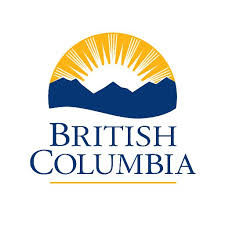conservation
Type of resources
Available actions
Topics
Keywords
Contact for the resource
Provided by
Years
Formats
Representation types
Update frequencies
status
Service types
-
ENV - Environment and conservation (environment)Environmental resources, protection, and conservation. For example, resources describing pollution, waste storage and treatment, environmental impact assessment, environmental risk, and nature reserves. The conservation data is current as of October 2013. The air quality and water quality data is of unknown date and accuracy. No updates in this dataset have been made since that time. The air quality and water quality data is of unknown date and accuracy. We are making all efforts to update conservation, protect areas and parks as soon as possible.
-
ENV - Environment and conservation (environment)Environmental resources, protection, and conservation. For example, resources describing pollution, waste storage and treatment, environmental impact assessment, environmental risk, and nature reserves. ) Please note: Protect Areas of the NWT has been generalized as of 2004. No updates in this dataset have been made since that time. We are making all efforts to update conservation, protect areas and parks as soon as possible. May 7, 2012
-
This dataset contains area-based management measures that qualify as 'other effective area-based conservation measures' ('other measures') according to DFO's Operational Guidance for Identifying ‘Other Effective Area-Based Conservation Measures’ in Canada’s Marine Environment (http://www.dfo-mpo.gc.ca/oceans/publications/oeabcm-amcepz/index-eng.html). It also contains basic information about these ‘other measures’, specifically their names, objectives, and prohibitions. The identification of existing, and establishment of new, 'other measures' is an important element of Canada’s strategy to meet its marine conservation targets to protect 5 percent of Canada’s marine and coastal areas by 2017 and 10 percent by 2020. 'Other measures' will be evaluated regularly, taking the most recent available information into account. In addition new 'other measures' will be identified or established over time. Therefore, this data set may change over time, and is considered current as of its publication date stamp. The boundaries and attributes in this dataset are for information purposes only, and should not be considered legally authoritative.
-
ENV - Environment and conservation (environment)Environmental resources, protection, and conservation. For example, resources describing pollution, waste storage and treatment, environmental impact assessment, environmental risk, and nature reserves. The conservation data is current as of October 2013. The air quality and water quality data is of unknown date and accuracy. No updates in this dataset have been made since that time. The air quality and water quality data is of unknown date and accuracy. We are making all efforts to update conservation, protected areas and parks as soon as possible.
-

Conservation Lands spatial and attribute data. This includes related information on various types/classes of land secured for fish, wildlife and habitat conservation purposes. It includes Wildlife Management Areas (WMA) designated by Order in Council (OIC). Source data are from Tantalis as well as the derived product from GeoBC. Overlap between this dataset and the [__NGO Conservation Areas - Fee Simple__](https://catalogue.data.gov.bc.ca/dataset/ngo-conservation-areas-fee-simple) dataset will occur where NGO lands have been leased to the province. Discrepancies between the provincial layers and this dataset are due to differing source cadastral information. A [__Conservation Cross Reference Table__](https://catalogue.data.gov.bc.ca/dataset/db6d4e9d-aa20-4682-9e43-ad6ae52f4466) provides a link between this dataset and the NGO Conservation Areas – Fee Simple dataset. The CIP_PCL field in the NGO Conservation Areas dataset links to the Conservation_Land_ID field in the provincial Conservation Lands dataset.
-

This dataset shows the known and previously reported location of rare plants and animals in Yukon Territory as mapped by the Yukon Conservation Data Centre. The Yukon Conservation Data Centre follows NatureServe methodology that depicts Element Occurrences (an area of land and/or water in which a species is or was present)(EO) as polygons. These polygons include locational uncertainty. The locational uncertainty incorporates inaccuracies that can be associated with the collection of location information, such as inaccurate GPSs or vague locational descriptions. Data are mapped at 1:50,000 or larger scale. A user manual describing the data can be found at [https://mapservices.gov.yk.ca/geoyukon/Understanding_Yukon_Conservation_Data_Centre_Data.pdf](https://mapservices.gov.yk.ca/geoyukon/Understanding_Yukon_Conservation_Data_Centre_Data.pdf) . For detailed information about particular element occurrences, contact the Yukon Conservation Data Centre at [yukoncdc@yukon.ca](mailto:yukoncdc@yukon.ca) or 867-667-3684. It is very important to note that the absence of mapped locations in an area of interest does not necessarily mean that there are no species of conservation concern present; only that there are none currently recorded in the database. A detailed assessment of the site conducted during the appropriate season by qualified biologists is the only way to confirm presence or absence of a species of conservation concern. Distributed from [GeoYukon](https://yukon.ca/geoyukon) by the [Government of Yukon](https://yukon.ca/geoyukon) . Discover more digital map data and interactive maps from Yukon's digital map data collection. For more information: [geomatics.help@yukon.ca](mailto:geomatics.help@yukon.ca)
-

This point layer serves as a flag for known and previously reported locations of species of conservation concern in Yukon, as mapped by the Yukon Conservation Data Centre, when viewed at scales beyond 1:160,000. To view the actual mapped locations (polygons) see the Species of Conservation Concern layer, which becomes visible at 1:160,000. Distributed from [GeoYukon](https://yukon.ca/geoyukon) by the Government of Yukon. Discover more digital map data and interactive maps from Yukon's digital map data collection. For more information: [geomatics.help@yukon.ca](mailto:geomatics.help@yukon.ca)
-

Each hexagon in this layer serves as a flag to indicate there is one or more mapped locations of a species that is subject to persecution or harm within the hexagon boundaries. Access to the precise locations are restricted, unless there is a demonstrable business need for the information. Users are asked to contact the Yukon Conservation Data Centre ( [yukoncdc@yukon.ca](mailto:yukoncdc@yukon.ca) ) to request access to precise locations and details on the species involved. Distributed from [GeoYukon](https://yukon.ca/geoyukon) by the [Government of Yukon](https://yukon.ca/) . Discover more digital map data and interactive maps from Yukon's digital map data collection. For more information: [geomatics.help@yukon.ca](mailto:geomatics.help@yukon.ca)
-
This dataset contains area-based management measures that qualify as 'other effective area-based conservation measures' ('other measures') according to DFO's Operational Guidance for Identifying ‘Other Effective Area-Based Conservation Measures’ in Canada’s Marine Environment (http://www.dfo-mpo.gc.ca/oceans/publications/oeabcm-amcepz/index-eng.html). It also contains basic information about these ‘other measures’, specifically their names, objectives, and prohibitions. The identification of existing, and establishment of new, 'other measures' is an important element of Canada’s strategy to meet its marine conservation targets to protect 5 percent of Canada’s marine and coastal areas by 2017 and 10 percent by 2020. 'Other measures' will be evaluated regularly, taking the most recent available information into account. In addition new 'other measures' will be identified or established over time. Therefore, this data set may change over time, and is considered current as of its publication date stamp. The boundaries and attributes in this dataset are for information purposes only, and should not be considered legally authoritative.
-
Bird Studies Canada WMS/WFS Server for bird distribution and abundance data, and related information. Bird Studies Canada gratefully acknowledges the support of Environment Canada - Canadian Information System for the Environment in developing this service.
 Arctic SDI catalogue
Arctic SDI catalogue